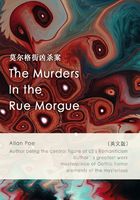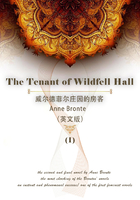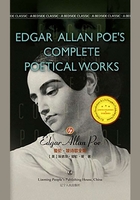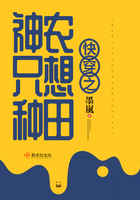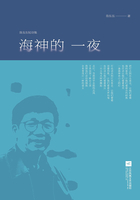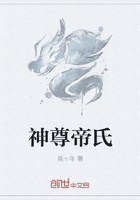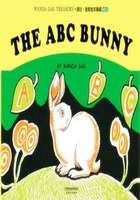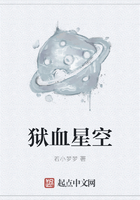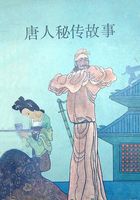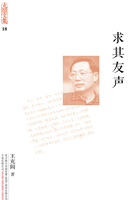Turn in your telescope. Pick up your kaleidoscope. A telescope offers you one linear point of view—one straight line focused on something that may be pretty far away. A kaleidoscope gives you a fascinating array of views. Rather than having a clear, static career path, the workplace's changing landscape offers us unique patterns to view and evaluate. Like the design change even one small turn of the kaleidoscope gives you, the experiences that make up a career shift offer a wide variety of development options and a pretty amazing array of growth possibilities, including some you can reach for now—if, and only if, you learn to appreciate the emerging displays.
Did you know that the inside of the typical, basic kaleidoscope contains just three mirrors? Yes! All those intricate patterns can result from just three mirrors and a handful of beads or pieces of glass. Positioned at angles to one another, the mirrors combine to reflect one another as well as the items captured in the base of the tube. As beads shift and move with each twist of the kaleido-scope tube, the three mirrors produce unique patterns—patterns waiting for you to consider and act on them.
Mirror, Mirror
Like the three-mirrored kaleidoscope, there are three components that guide a satisfying career. Those three components are skills, interests, and values.
Skills include all the tools you have collected in your tool kit: those capabilities you developed in that very first job, what you learned as you started your career journey, as well as the abilities you are polishing right now. Some of those skills might be things you hope to never have to use again. That knowledge points you to the second mirror: interests. Your inventory of interests includes those work tasks you like to do. You may not yet be expert in the things that interest you, but the interests mirror holds items that intrigue you enough to make the work of learning or polishing them worth it. Most people really want a chance to do what they do best.
And that third mirror? It's the one that's probably closest to your heart. The third mirror holds your values—those things you hold dear, things that are important to you. When you examine the values mirror, you are looking at what keeps you committed to accomplishing a task that's tough or challenging. The values mirror contains factors like “serving others,” “being creative,” and “spending time with family and friends”—fundamental aspects of a role or assignment that can make or break your job satisfaction.
All three mirrors matter. Understanding what's inside each one is a start. Examine your skills list: What's in your tool kit? Review your inventory of interests: What's energizing and enticing? Explore your values: What's so important that it simply must be a part of the next role or job? When you clarify what you're good at (your skills and abilities), what you enjoy (your interests), and what's important to you (your values), you've created your personal three mirrors, your kaleidoscope.
In combination, the three mirrors can reveal which opportunities and experiences will be the most rewarding and satisfying. Even small turns of the kaleidoscope tube can change the image and reposition which emerging opportunities will best match your mirrors. When you know what your mirrors are made of, you can make better choices about what's next in your career journey.
A Kaleidoscope View: The Basics
Here are some basics to adopting a kaleidoscope view.
APPRECIATE PATTERNS
As the view of careers shifts from telescope-type paths (aiming for one distant point in space) to kaleidoscope-type patterns, opportunities and options multiply. Where a path offers a singular next step, a pattern offers multiple ways to proceed, depending upon individual needs and desires, in the context of the immediate environment—ways we may never have imagined. A twist or change will produce new and sometimes different choices rather than simply shutting down a path.
With each twist of the tube, whether self-initiated or the result of external forces, you will have new patterns and new opportunities to consider.
For example, if the leadership team splits an existing department into two, options multiply. You may have had a telescope view of someday directing the old department. Now you can think about directing one of the new ones, moving laterally to direct the other, carving a new role as liaison between them. When you appreciate the new pattern, you see choices.
ENCOURAGE OPTIONALITY
During an interview for this book, a client shared the term optionality. When asked to describe the riskiest career choice she had made in her career journey, she hesitated. She then explained that she didn't feel she had made risky choices—something we found surprising, considering that her choices included joining the army at eighteen, moving around between distinctly different industries, and taking two years off to go back to school! She explained that the reason she felt choices others might view as risky were not so concerning was that she always made sure she had optionality. She always had a plan A, a plan B, and a few others in her back pocket. She built resilience into her every decision.
With optionality, if plan A becomes less attractive, plans B, C, D, and more are ready and available. Eyeing career goals through a telescopic lens, zeroing in on just that dream job with the cool title and swanky office, may lead to disappointment when the title disappears or the office gets downsized. Optionality means being ready to implement any one of multiple plans when the kaleido-scope twists to produce a new landscape.
Try this idea on for size: I don't have to leave. I could add more skills. Could it fit you? Could it fit someone who reports to you? Turn the kaleidoscope to imagine what else is possible, right where you are.
BALANCE MONEY AND MEANING
As millennials joined the workforce they made this point crystal clear: it's about more than just money. Meaning has taken on an even more important role in the equation.
Hierarchies encouraged a telescope view, and the focus was often more money. Yet how many people do you know who made it to the job in their telescope and felt empty after a while, when the money couldn't keep the job shiny and exciting?
We're not suggesting that money isn't important. What we are suggesting is that, now more than ever, it is time to balance the scales of money and meaning.
Rather than all-or-nothing trade-offs where individuals must decide to take the money and leave meaning behind or choose to eat ramen noodles for three meals a day to have a meaningful career, we believe that finding the right balance is the key to success. We have met hundreds of people who, every day, throw their energy into work that is not paying big bucks. They probably earn enough to cover the rent or mortgage and a dinner out every now and then. But these individuals would not give up their roles of helping, serving, teaching, and learning. They know they are making contributions that are important to them, every day.
Career mobility allows you to define your own measures for balancing money and meaning, rather than accepting something prescribed by external criteria. It results in a wider range of possibilities and honors the individual. Terms like fulfillment and sense of purpose can move conversations beyond just salary and wages when examining career choices. Conversations that open all three mirrors of a personal kaleidoscope—skills, interests, and values—will result in more informed and fulfilling career options.
LOSE THE ORG CHART; BUILD AN ORB CHART
Many organizations have moved away from purely hierarchical structures to designs that accommodate a more project-based approach to work and allow for greater cross-functional relationships. The information technology industry led the way with the introduction of the “agile” approach, where individuals move quickly between or within teams, switching assignments, exchanging roles, and interfacing with multiple colleagues to tackle an array of challenges. Talent orbits one team or assignment, then moves to another, and another, as needs change and projects end. Employees take with them an ever-expanding inventory of knowledge, experience, and connections. The insights they gain will help them make even more valuable contributions in the future. Imagine how orbiting can enhance the ability to manage others, if and when the time comes.
These agile experiments have shown us that traditional organizational structures beg for a new view: careers that play out in new, flexible structures and offer rich career experiences. Perhaps the organization charts of the future will be flexible orbiting images that depict a workplace where individuals move about, orbit around colleagues depending upon the task at hand, and then move on.
Not long ago, the Career Systems International leadership team took on the task of updating our organization chart. It seemed like a straightforward, get-it-done kind of chore—until we got started. We quickly realized that the tidy hierarchical set of boxes connected by straight and right-angled lines simply wouldn't work. CSI teams don't fit nicely into that model. We move around from project to project, some short term, some longer; we orbit into projects as needed and then move on. We are not alone in working this way.
Nimble organizations and agile individuals are already embracing this model. Orbiting models of work will result in even more career mobility patterns.
These new views of career development have everything to do with the way we see and navigate growth opportunities.
Instead of a telescopic perspective that presents a linear path, shifting workplace structures require us to widen our view, to align career development with the changing environment, to look around us to see what possibilities exist. A kaleidoscope view of career mobility provides many scenarios and multiple opportunities, based on whether the tube twists left or right, the time before a new pattern emerges, and our willingness to peek into a pattern to see what it offers. The outcomes are beautiful patterns, with rarely the same view twice.
THINK ABOUT IT . . .
Here's your next set of questions. These, like the ones in the first chapter, ask you to think about your attitude toward a number of career mobility ideas. Find an opportunity to talk about one or more of these questions. What effect would your answers have on your attitude toward career mobility?
*Which basics of a kaleidoscope view will be easiest for you to put into play? Which will be most difficult?
Appreciate patterns
Encourage optionality
Balance money and meaning
Lose the org chart; build an orb chart
*Which of the basics is countercultural for you? For your organization?
*Which do you hope your manager will use?
*What opportunities are presenting themselves right now?
*Money aside, what else motivates you?
TALK ABOUT IT


